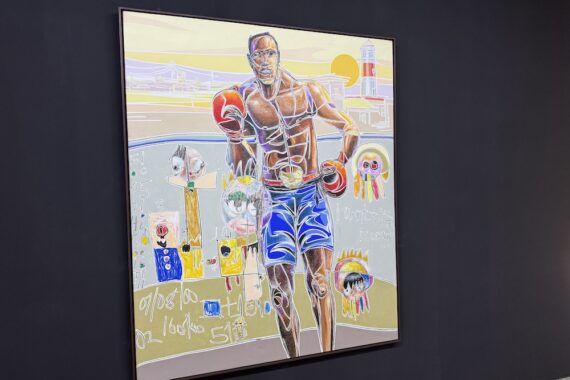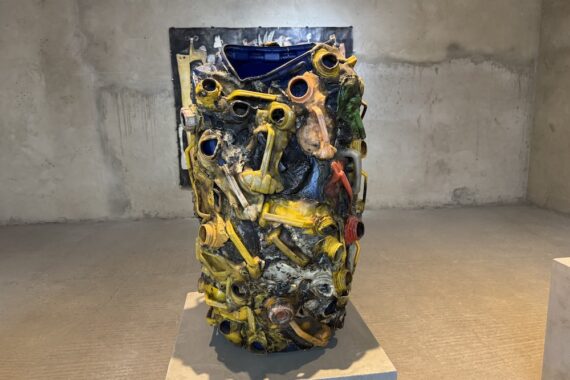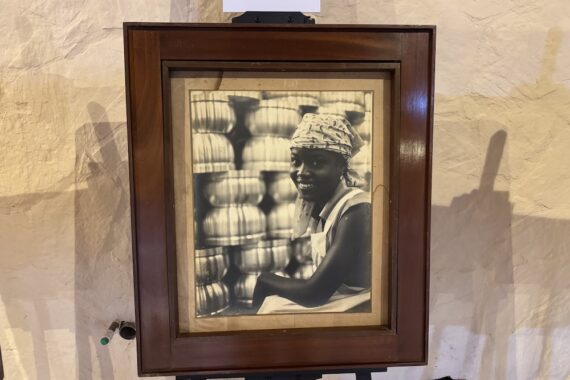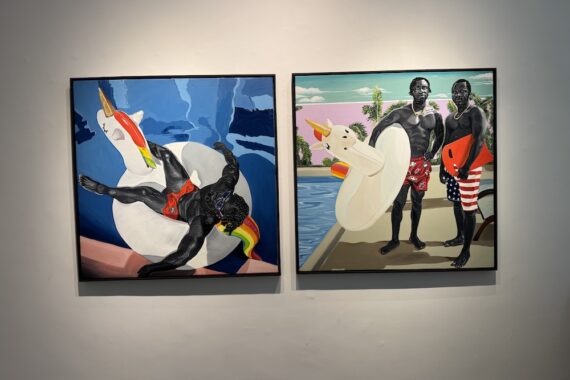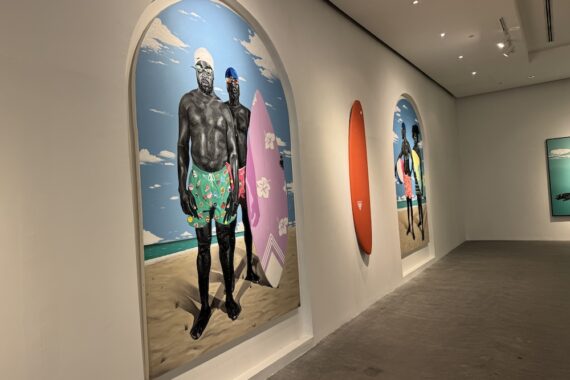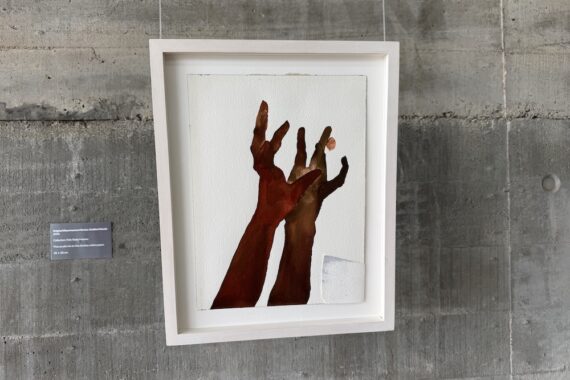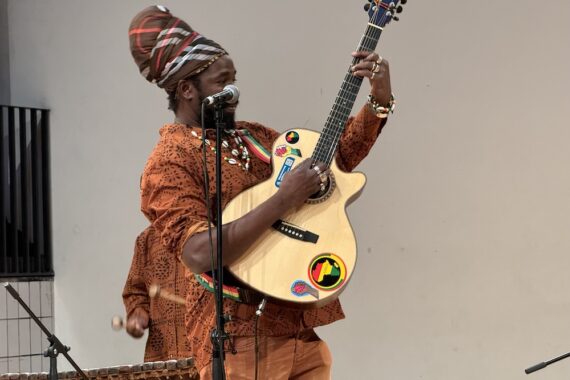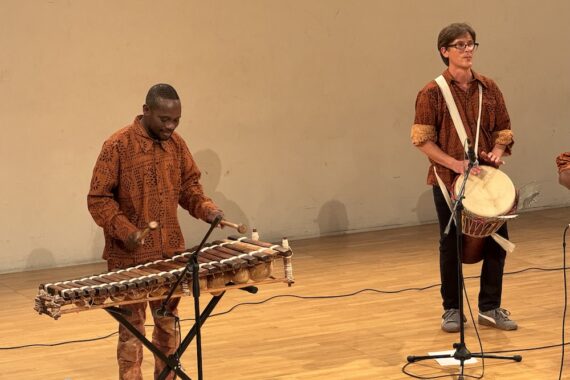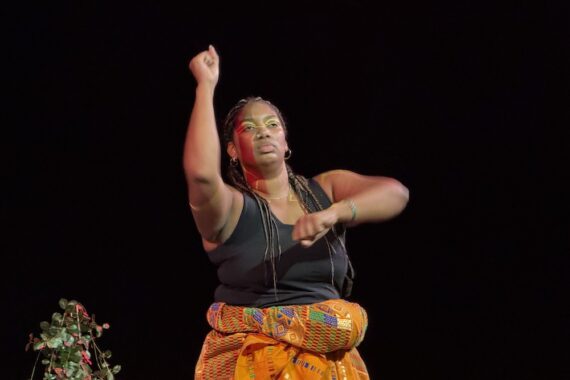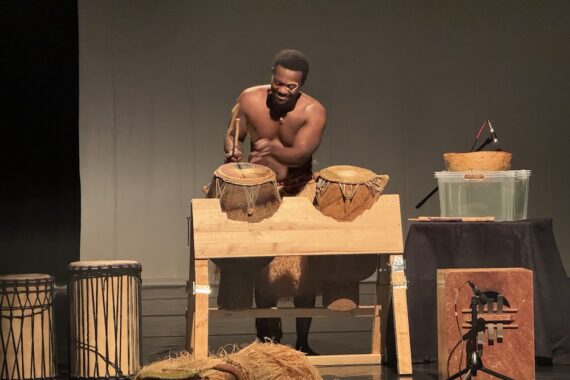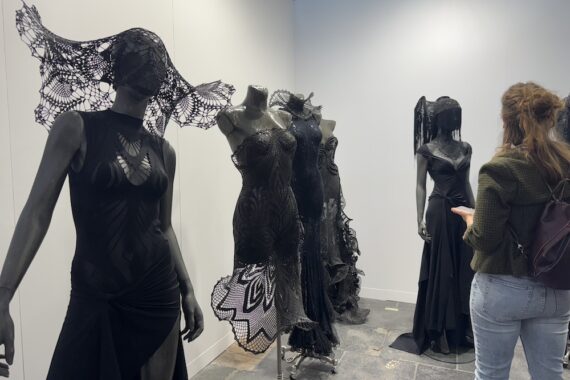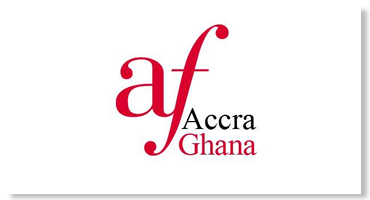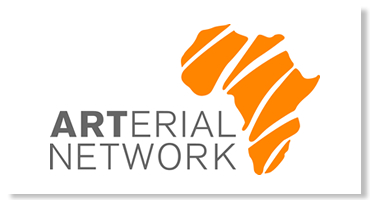By John Owoo
(Accra – Ghana)
At Gallery 1957’s Unlimited Space in Accra, Serge Attukwei Clottey turns personal memory and collective history into an immersive terrain of material, scent, and sound.
Titled [Dis]Appearing Rituals: An Open Lab of Now for Tomorrow, the exhibition marks a reflective homecoming to Jamestown, the coastal enclave tied to his paternal lineage. But this is no nostalgic return—it is an excavation of endurance, adaptation, and the quiet intelligence embedded in daily survival.
During a three-month residency at the old City Engineer’s Building, Clottey encountered Jamestown anew—the acrid scent of burning tires, crashing waves, street chatter, and radio melodies filtering through the air.
Curated by Ato Annan and Allotey Bruce-Konuah, these impressions infuse the exhibition’s sensory field, where materials breathe with memory. His yellow jerrycan panels—cut, stitched, and sutured with copper wire—form luminous tapestries that shimmer between beauty and decay. They evoke both the scarcity and resourcefulness of communities that transform remnants into renewal.
Clottey’s ongoing concept of “Afrogallonism” anchors the show, using the ubiquitous plastic jerrycan as a metaphor for survival and resilience in West Africa. Once a vessel of necessity, the jerrycan becomes an emblem of creative resistance. In his hands, discarded plastic is reborn into monumental forms that hold stories of migration, labour, and environmental precarity.
The exhibition extends beyond material assemblage. Disassembled wooden canoes, melted jerrycan sculptures, and charcoal drawings mirror the rhythms of communal life along Ghana’s coast—fragile, industrious, and improvisational. Collaboration also emerges as a theme, notably in paintings created with Clottey’s son, bridging generations through shared gestures and creating.
What emerges is less an exhibition than an unfolding ritual—a choreography of labour and transformation. Clottey redefines resilience not as endurance through hardship but as an active, creative intelligence. His work resists the passivity often ascribed to survival, instead asserting it as a cultural form —a philosophy born of necessity.
In [Dis]Appearing Rituals, material becomes memory, and memory becomes resistance. The familiar yellows of jerrycans, the dark grain of wood, and the faint echo of the sea together create a living archive of a community’s will to endure. Clottey’s Jamestown is not disappearing—it is reinventing itself, one stitch, one scar, one story at a time.
The exhibition concludes on Saturday, January 3, 2026.
Read More »













